
Feb 02 2022 Every Recipe Tells a Story—7 Steps to Cooking with Your Grandchild
Every family recipe tells a story—perhaps a Jewish story (why we eat challah on Friday nights or cheesecake on Shavuot) or a personal story (why you add chopped nuts to your cookies or lemon juice to your chicken soup).
When you bake and cook with your grandchild they are learning more than how to scoop, measure, chop and stir, they are also learning your stories behind the recipe, building connections to their family’s past and religious heritage, and creating memories they one day might share with their own grandchildren.
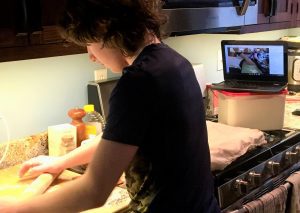
Young children like to imitate what they see you do. Older kids are looking to assert their growing feelings of competence and independence. Both take pride in and enjoy eating what they have made themselves.
If you live at a distance from your grandchild, with the help of a parent or other adult, you can still cook together. Pick a recipe that works well if you are together on screen. You might send the recipe in advance, each gather the ingredients, and set a time to cook or bake together, each in your own homes.
![]() Click HERE for Faith Kramer’s challah recipe.
Click HERE for Faith Kramer’s challah recipe.
Here are 7 tips for cooking or baking with toddlers, young children, and preteens while telling stories.
1. Choose your recipe based on a story
When choosing a recipe, think about the story you want to share. In the case of a family recipe, perhaps talk about how you learned the recipe and the associations you have with it. If it has religious significance explain that. If it involves unusual ingredients, tell how the ingredient is made or why it is needed. Describe the significance of kitchen utensils (“See this rolling pin? A long time ago it belonged to your great-grandma who ______ “). Have your helpers sniff and taste spices and sauces and talk about that.
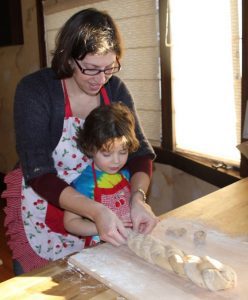 You might also try recipes from the international Jewish experience different from your own and talk about those communities. Talk about family members and their relationship to the recipe. My children loved hearing how my grandfather, whom they never knew, loved to eat bread for dessert. The reminiscence made him come alive for them.
You might also try recipes from the international Jewish experience different from your own and talk about those communities. Talk about family members and their relationship to the recipe. My children loved hearing how my grandfather, whom they never knew, loved to eat bread for dessert. The reminiscence made him come alive for them.
For younger children, keep the stories short and entertaining. Older children can more appreciate the intricacies of a recipe, for example, why yeast makes bread rise.
The stories you tell don’t have to be about the recipe. Ask your grandchildren questions as you work together, not just about the recipe but about their interests. Listen attentively. Encourage them to ask you questions too. Tell them about what it was like when you were growing up. Invent silly or funny stories and jokes about the ingredients and utensils you are using. Make this time joyful and a connection to you they want to experience again.
2. Allow enough time
Cooking and baking with children can take significantly more time than the recipe indicates. It will also likely be messier. Younger helpers are pretty much guaranteed to randomly lick spoons and fingers so be prepared for that.
3. Choose recipes, or tasks within recipes, that are age-appropriate
Break down the recipe so you know in advance who will do what. The youngest helpers can mix, and maybe shape baked goods and add toppings and garnishes. Slightly older ones can help measure and pour, crack eggs, and maybe slice soft foods such as strawberries or mushrooms with a plastic or kid-friendly knife. Pre-teens can learn knife and stove safety and start fully participating in the food preparation.
4. Invite your grandkid’s additions or alternatives
If there are options for a recipe (say, adding raisins or chocolate chips), get the child’s input and suggestions. This helps create ownership of the experience and may just develop a new family recipe. (Brownies smothered in sprinkles, yummm.)
5. Demonstrate what you want to be done — and be prepared for imperfection
Describe the steps as you and your grandchild perform them. And be ready to accept that the process and result may not be as you demonstrated or what you expect. Yes, some flour may plop onto the counter or the cookie may be misshapen. Young kids love to crack eggs. Let them pick out shells from the batter! We seek to help our grandchildren have agency, experiment, and feel creative and competent.
6. Make the workspace safe and comfortable for your helpers
Keep the kids away from hot surfaces or, depending on the child’s age, demonstrate how to safely put a dish or baking sheet into the oven. Work at a sturdy table that the child can easily reach or use a child-safe stepstool. Be prepared for meltdowns (“I wanted to add the sugar!”). Have realistic expectations of what your grandchild cares about and is able to handle and, especially, how long they can focus. You’ll soon see when they start to lose interest. Have toys or books nearby if they need a break from the cooking.
7. Account for the reluctant participant
If your grandchild does not want to participate, just let them watch and listen. At some point, they might just decide to join in or be more amenable to it next time. Perhaps give your grandchild several recipe options from which to choose and start from there. Or ask who they would like to cook for and perhaps they can help set the table and serve the food.
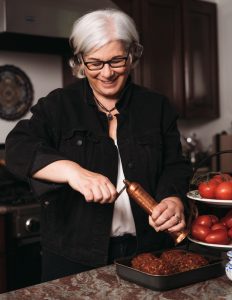
Baking and cooking with your grandchild is so much more than teaching kitchen skills (though that aspect is not to be underestimated). It’s a way to spend meaningful time together, to share thoughts, and to build trust.
“There can be no joy without food and drink” Talmud, Mo’ed Katan.
Faith Kramer is a food writer and recipe developer concentrating on the foodways, history, and customs of the Jewish diaspora. She has written hundreds of posts about Jewish customs and food, travel, and global ingredients with accompanying recipes. Faith has taught numerous cooking classes, presented programs on Jewish customs, celebrations, and holidays, and led food-related walking tours.
She is the author most recently of 52 Shabbats: Friday Night Dinners Inspired by a Global Jewish Kitchen.
Visit FaithKramer.com for links to more of her writing about Jewish customs and food, travel and global ingredients and recipes. Or contact Faith at: faith@faithkramer.com
Photographic Credits
Banner, baking teen Zoom, braiding challah, and reading recipe by Stephanie Fink
Decorated challah & measured ingredients by Faith Kramer
Author photograph and book cover by Clara Rice

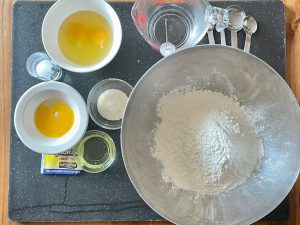
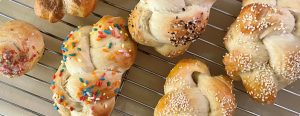
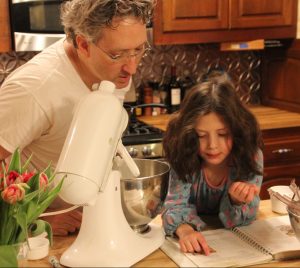


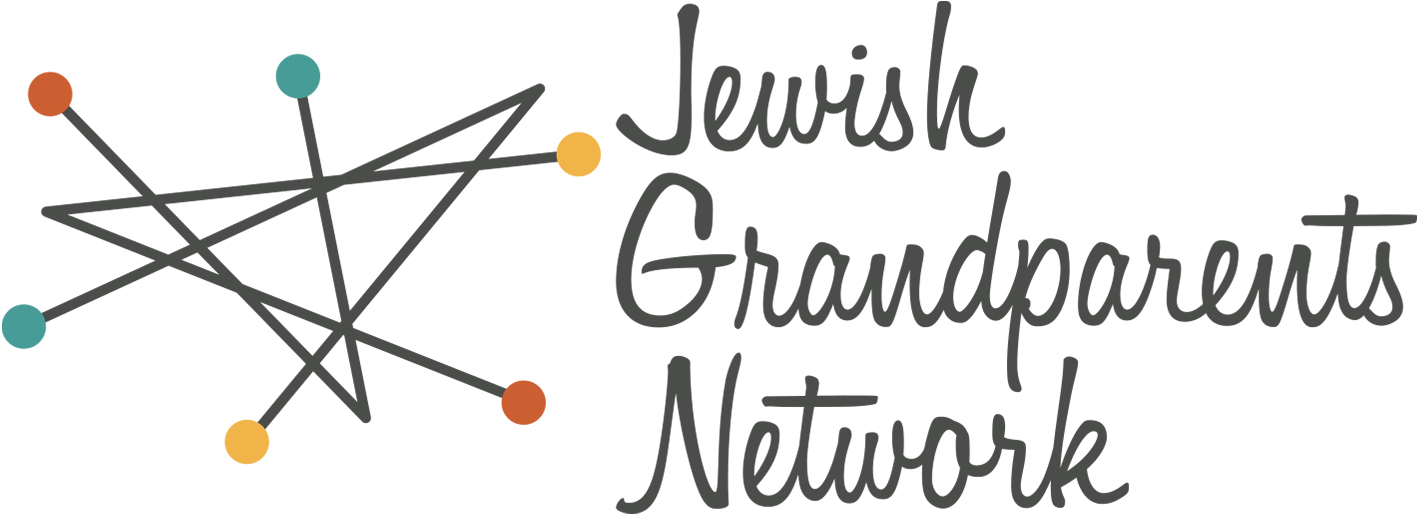
 We use technologies like cookies to remember your preferences. Consenting to these technologies will provide you with a better browsing experience. JGN never shares information about your use of our website.
We use technologies like cookies to remember your preferences. Consenting to these technologies will provide you with a better browsing experience. JGN never shares information about your use of our website.